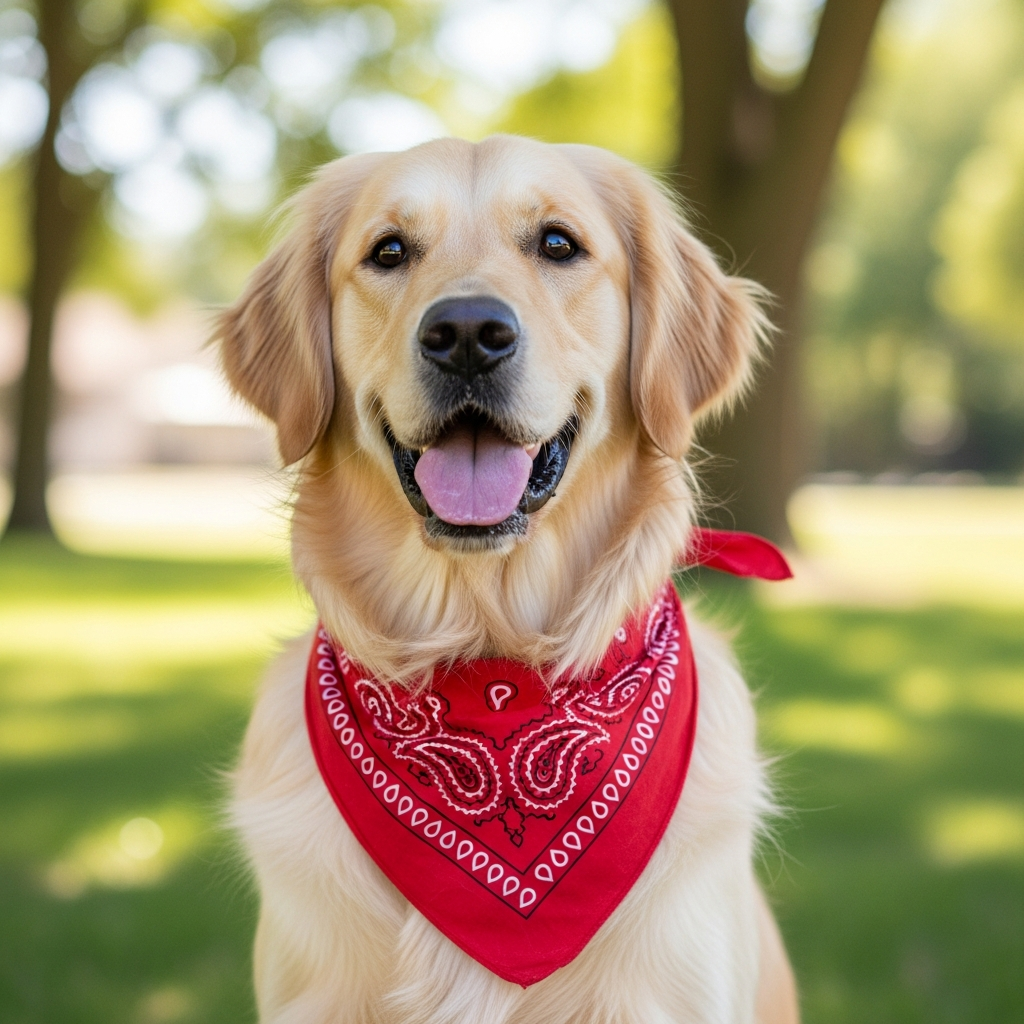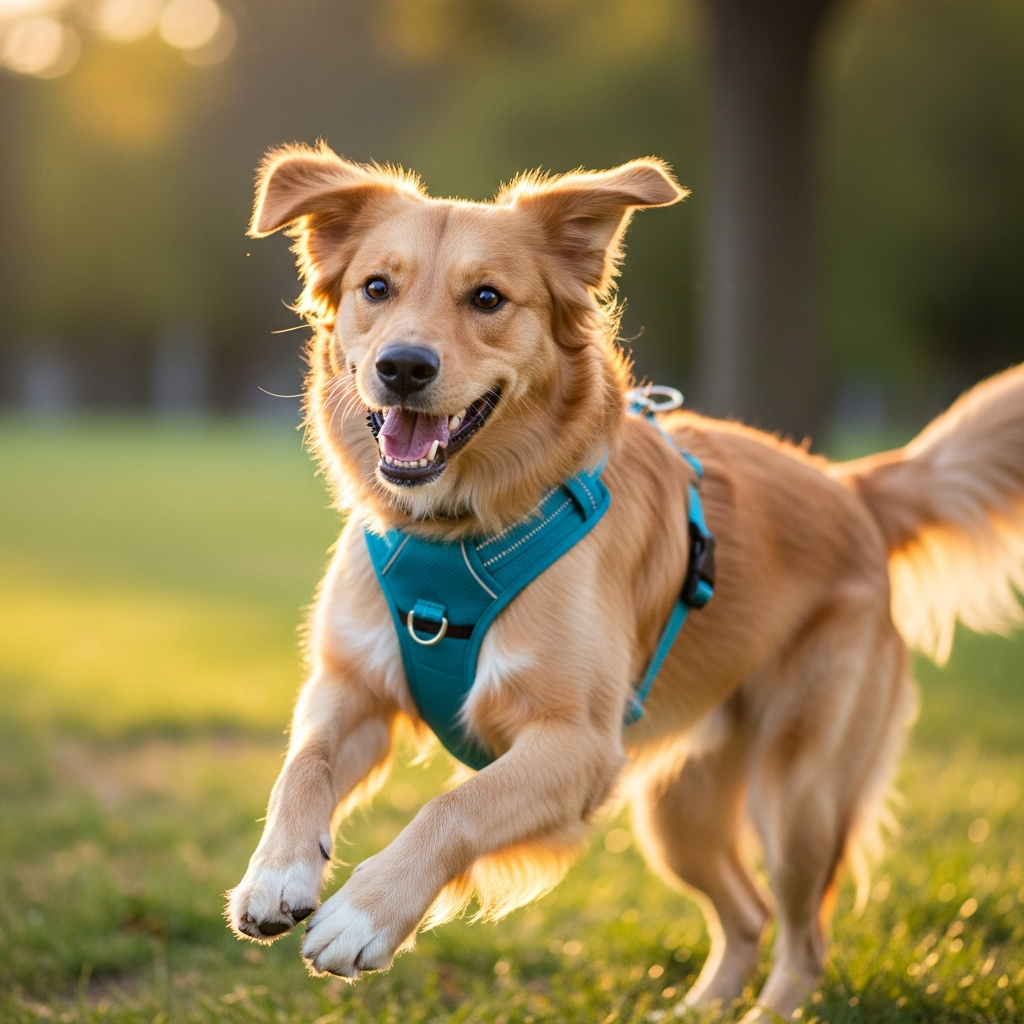You're standing in the pet store aisle, completely confused. The wall of harnesses and collars is overwhelming. You just want to choose the safest, most comfortable option for your dog's daily walk.
For most walks, a harness is the better and safer choice. It distributes pressure across the dog's chest and shoulders, preventing neck injury. A collar's main job is to hold ID tags and is only suitable for dogs that have perfect leash manners.
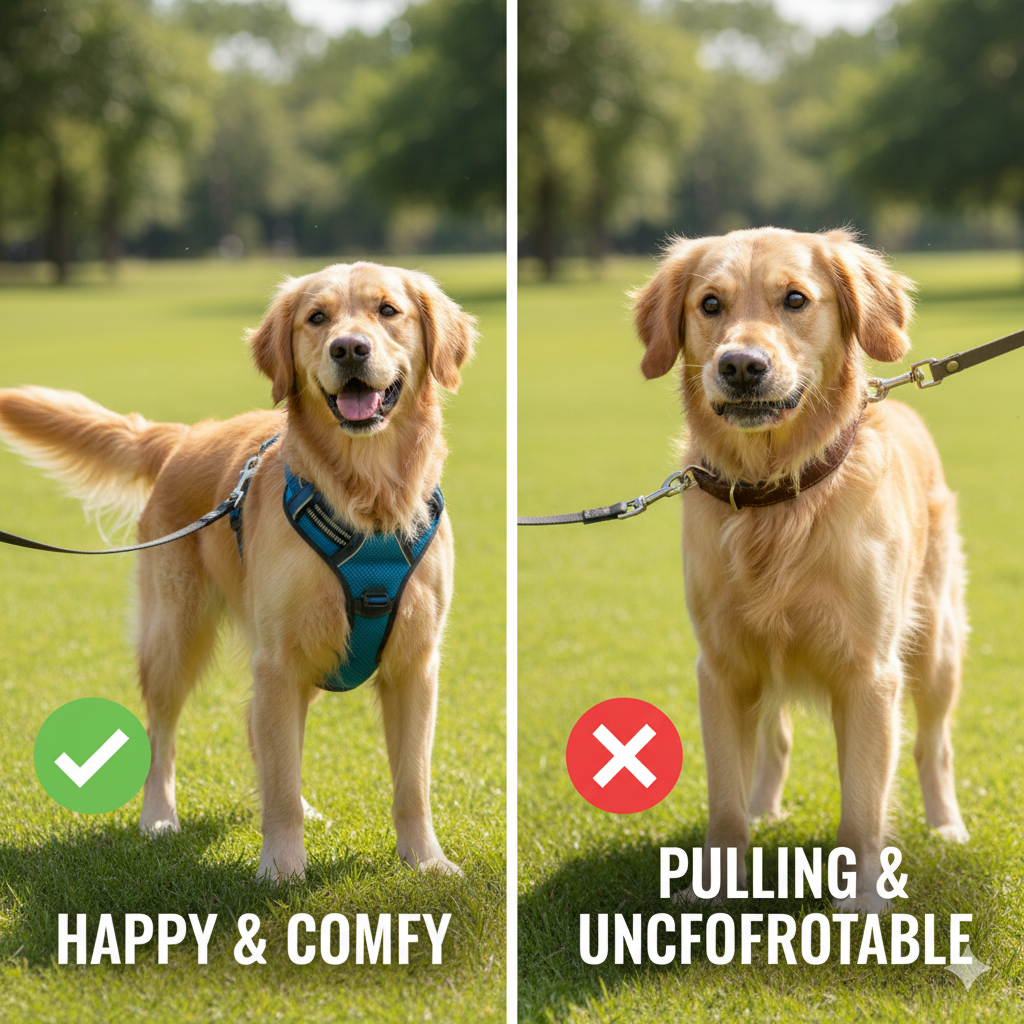
As a designer in the pet industry, I've seen this debate play out for years. People often think one is "good" and the other is "bad." But that’s not the right way to look at it. They are different tools designed for different jobs. Thinking about the safety and purpose behind each product is the key to making the right choice. Let’s break down the specifics so you can feel confident you're getting the right gear for your best friend.
Why is a Harness a Safer Choice for Many Dogs?
You cringe every time your dog pulls and makes that awful gagging sound. You worry that their collar is doing more harm than good, but you aren't sure what the alternative is.
A harness is safer because it moves the point of pressure from your dog's delicate neck to their much stronger chest and shoulders. This simple change eliminates the risk of choking and long-term damage to their trachea, spine, and throat.
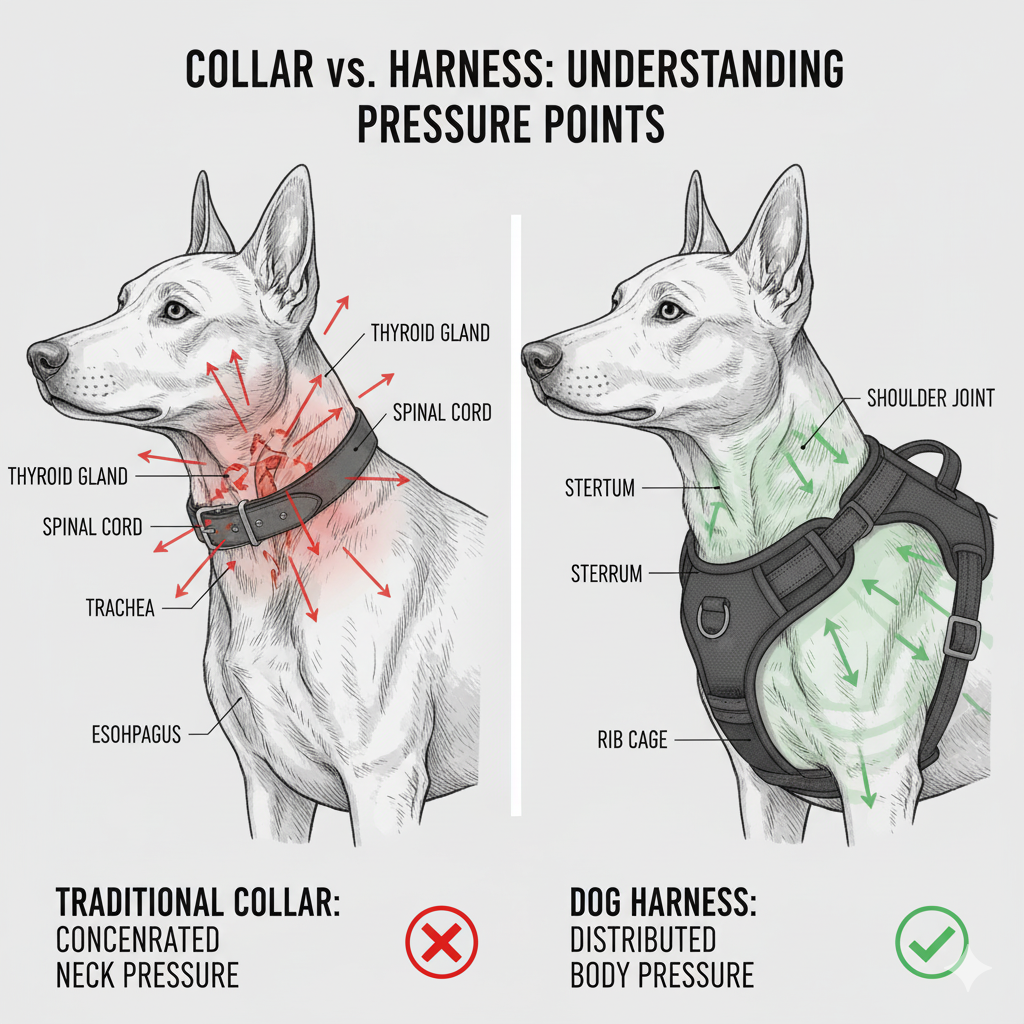
From a product design standpoint, this is a problem of anatomy and physics. A dog's neck is a crowded area containing their windpipe (trachea), esophagus, thyroid gland, and cervical spine. When a dog pulls against a collar, all that force is concentrated on this small, vulnerable area. It's especially dangerous for certain types of dogs. Brachycephalic (flat-faced) breeds like Pugs and French Bulldogs already have compromised breathing, and a collar makes it much worse. Small breeds like Chihuahuas and Yorkies are highly prone to a condition called tracheal collapse, which can be caused or aggravated by collar pressure.
When I consult with brands, I always bring up safety first. A harness was specifically designed to solve these safety issues.
Potential Health Risks Comparison
| Health Risk | Collar | Harness |
|---|---|---|
| Tracheal Damage | High risk, especially for small breeds | Very low risk |
| Neck/Spine Injury | Moderate risk from sudden jerks | Very low risk |
| Increased Eye Pressure | Can increase pressure, risky for dogs with glaucoma | Minimal to no effect |
| Choking/Gagging | Common issue for dogs that pull | Eliminates the issue |
| Escape Risk | Can easily slip over the head | More secure when properly fitted |
A harness is simply a better-engineered solution for safely connecting a leash to a dog for a walk.
So, When is a Collar the Right Tool to Use?
You see well-behaved dogs walking on collars all the time. It makes you wonder if you're overthinking it. Does your dog really need both a harness for walks and a collar?
A collar's most important job is to hold your dog's identification and registration tags 24/7. It's the fastest way for your dog to be returned if they ever get lost. It is also fine for quick potty breaks or for a dog that never, ever pulls on the leash.
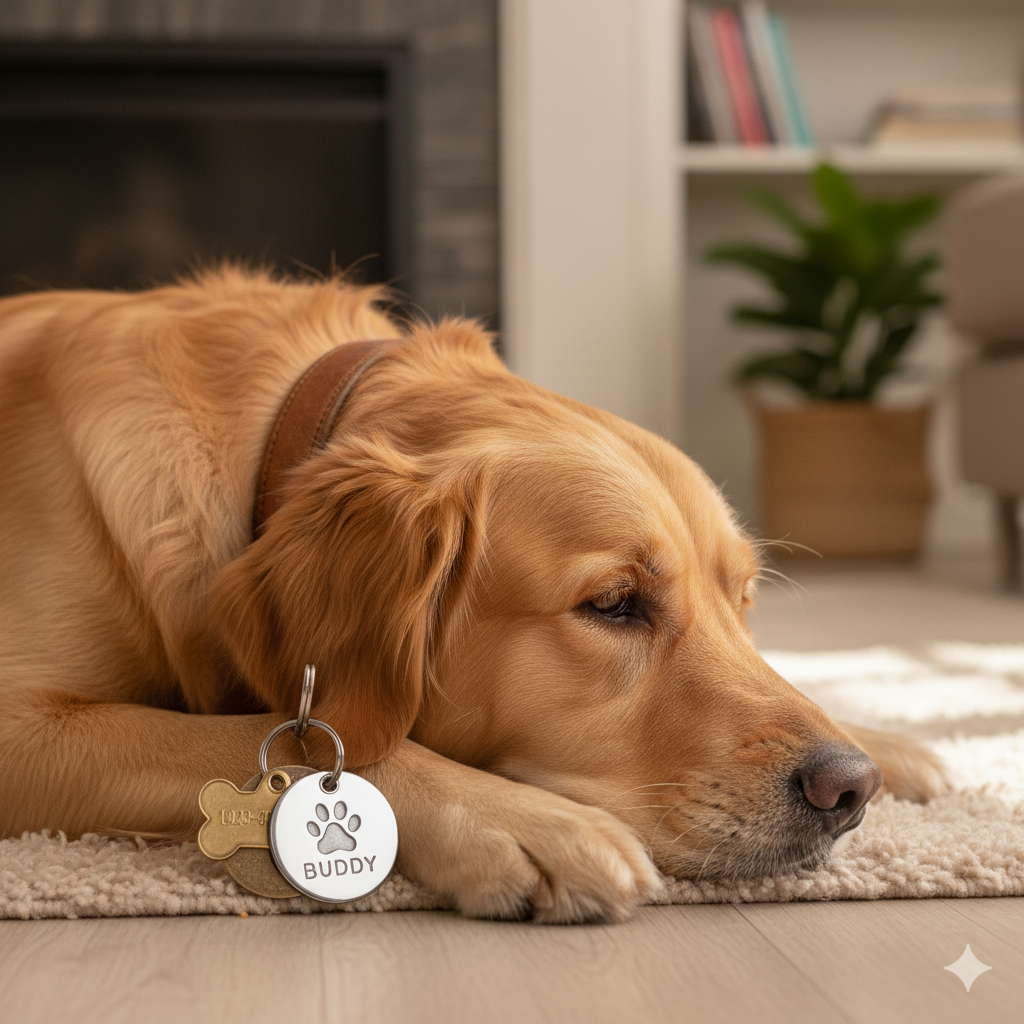
I always tell my clients that a collar's primary design function should be as a permanent ID holder. The leash attachment ring is a secondary feature. That's why fit and material are so important. The collar should be snug enough that it won't slip over the dog's head, but loose enough that you can fit two fingers underneath. In terms of materials, nylon is a durable, low-cost option, while leather offers a classic look. I've been working a lot with coated webbing, often known by the brand name Biothane, which is waterproof and super easy to clean.
So, is it okay to use a collar for a walk? Yes, but only if your dog has perfect loose-leash manners. If the leash is always slack, the collar is just a connection point. But most dogs will pull at some point—when they see a squirrel or another dog. Because of that, the safest setup for most dog owners is simple: a collar with tags that stays on all the time, and a well-fitting harness that you put on just for walks. This combination gives you the best of both worlds: safety, control, and constant identification.
Should I Choose Gear Based on My Dog's Activity?
Your dog is your partner for more than just walks. You go hiking, jogging, and to training classes together. Using the same old harness for every activity doesn't feel quite right.
Yes, you should absolutely pick gear based on the activity. A specialized harness will make the activity safer and more comfortable for both you and your dog. Different designs are optimized for different types of movement, control, and durability.
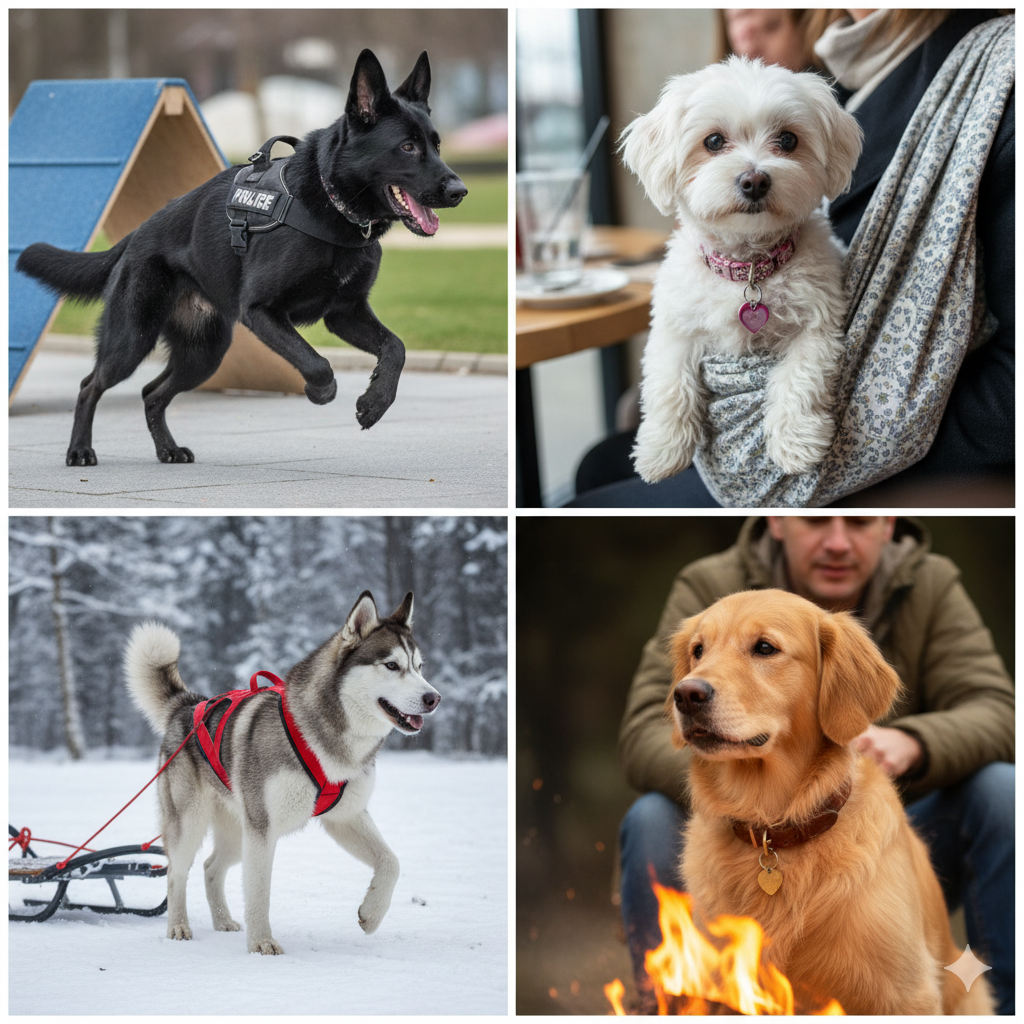
This is one of my favorite parts of being a dog gear designer. We aren't just making one product; we're creating solutions for specific scenarios. You wouldn't wear flip-flops to go hiking, and your dog shouldn't wear a standard walking harness for canicross (running with your dog). Using the right gear prevents injury and makes the activity more enjoyable. For example, a running harness often has a Y-shaped front. This is designed to leave the dog's shoulders completely free, allowing for a full and efficient running gait. A hiking harness, on the other hand, might have a handle on the back. This isn't for tying the dog up; it's to help you lift and assist your dog over obstacles like logs or rocks on the trail.
Here’s a simple guide to choosing the right tool for the job.
Best Gear for the Job
| Activity | Recommended Gear | Design Reason |
|---|---|---|
| Neighborhood Walk (Puller) | Front-Clip Harness | Redirects forward momentum to discourage pulling. |
| Jogging / Running | Y-Front, Back-Clip Harness | Allows for full range of shoulder motion. |
| Hiking on Trails | Sturdy Harness with Handle | Handle helps lift dog over obstacles; offers more coverage. |
| Training Class | Front-Clip Harness | Provides gentle directional control for teaching. |
| At Home / ID | Flat Collar with Tags | Lightweight and comfortable for holding essential ID. |
Thinking like a designer and choosing the gear that is purpose-built for your activity will make a world of difference for your dog’s comfort and safety.
Conclusion
For safety and control on walks, a harness is usually better. For identification and quick trips, a collar works well. The best choice depends on your dog, your training, and your activities.
Cindy Long is the Sales Manager of Raysunpets and a pet lover with over 12 years of experience in exporting pet products. She specializes in providing customized dog chest carriers, leashes and pet accessory solutions for the European and American markets, always focusing on the real needs of customers and pets, and is committed to creating high-quality, practical and comfortable products that allow fur kids to live happier lives.

